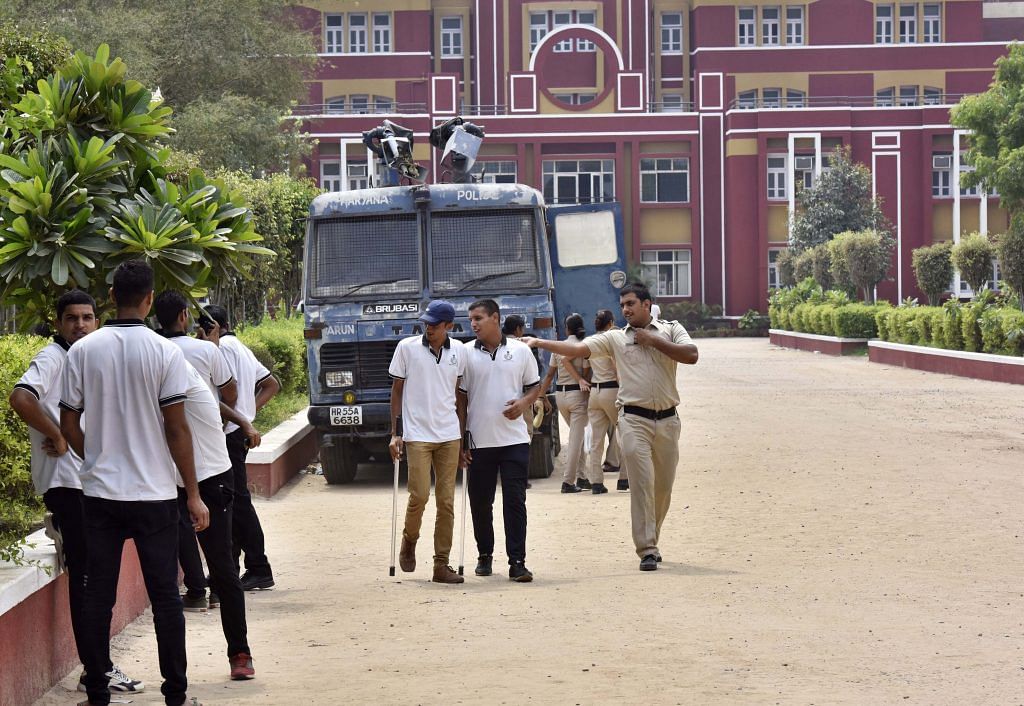CBI says it wasn’t the bus conductor who slit Pradyuman’s throat in Gurugram’s Ryan International murder case; it was a Class XI student of the school.
When in doubt, blame the “unwashed” masses.
Just when we had begun to get comfortable with the progress in the Pradyuman Thakur case after applying our carefully constructed, “usual suspect” template of who commits urban crimes – here comes a rude twist.
Now the CBI says it wasn’t the school bus conductor who slit seven-year-old Pradyuman’s throat in the washroom of the Ryan International School in Gurugram on 8 September. It was allegedly an 11th grade student from the same school, who “hoped that the act would help postpone exams and the parent-teacher meeting”, according to the CBI.
This comes weeks after the Gurugram police had arrested the bus conductor Ashok Kumar, and TV channels aired videos of him confessing that he had carried a knife into the washroom and killed the boy in panic. It appeared to be a crime that complied with all the urban prejudices of our outraging, privileged, and click-activism-friendly middle classes.
It confirmed our worst paranoia about the low-wage, blue-collar workers who live around us.
Right from former Delhi Chief Minister Sheila Dikshit to former Home Minister P. Chidambaram, we have always blamed migrants and porous borders for the rising crimes in the NCR region. Never mind that these so-called “migrants” are our gardeners, peons, gate-guards, cooks, drivers, cobblers, carpenters, construction workers and so on.
We want their cheap labour to subsidise our double-income lives. But we wish they would just make a quick, neat retreat into invisibility after they have finished our chores. Our collective hurry to blame Hemraj for the murder of Aarushi Talwar is just one recent example of how we are quick to pin the blame on the “worker” class for horrific crimes. (Leaked videos of other suspects’ “narco-tests” have been merrily run by TV channels. If he was a PLU or Bhadralok like us, we’d be outraging about the gross illegality of it all.)
But the police probe in the Ryan International case didn’t hold up for long. Kumar had not sexually assaulted Pradyuman after all. After Pradyuman’s father filed a petition in the Supreme Court, the police handed the case to the CBI.
Now, with the new development, we will be forced to face several inconvenient questions.
Just like the ones we faced nine years ago in Aarushi’s case: if it wasn’t the domestic worker, then who? Well-raised boys from (our kinds of) well-educated, middle class families can’t kill somebody just like that, many people are already saying.
This accused is a juvenile and will be produced before the Juvenile Justice Board – just like the other infamous juvenile – the youngest of the rapists in the Nirbhaya case. Remember the outrage it caused?
Will the age change the way we look at this new accused in the Ryan International murder case? Will people now demand sympathetic, compassionate treatment for him because he is under-age? Or should we regard this a “heinous” crime and treat him as an adult, like many of us demanded in Nirbhaya rapist’s case, and hang him, never mind his age? If he could be so heartless as to slit a little boy’s throat, why should his juvenility become his shield?
But wait, for that, we have to first determine his religion. Is he a Muslim?
This week, there was a disturbing article in the EPW magazine, which quoted from the Prison Statistics of India to show that there is an over-representation of minorities such as Muslims, Adivasis, and Dalits in our jails. This mirrored some of the data that regularly comes from the United States about the disproportionate incarceration of African-Americans – five times more than Caucasians.
As we agitate loudly to clean up our history textbooks and blame our colonial past for labelling some communities as “criminal”, it is time we look at our own complicity and biases when we look at crime – as we outrage on television, social media, and online petition platforms.
The police makes mistakes, so do we. That happens everywhere. But we must also examine how quickly we swallow convenient narratives about the “other” amidst us; and how quickly we rush to argue for empathy or call to provide counselling (parental and professional) to the accused who are like us.
Our biases may not send someone to prison. Only a police investigation and the court will. But our biases can shape the public debate in ways that we cannot control.
